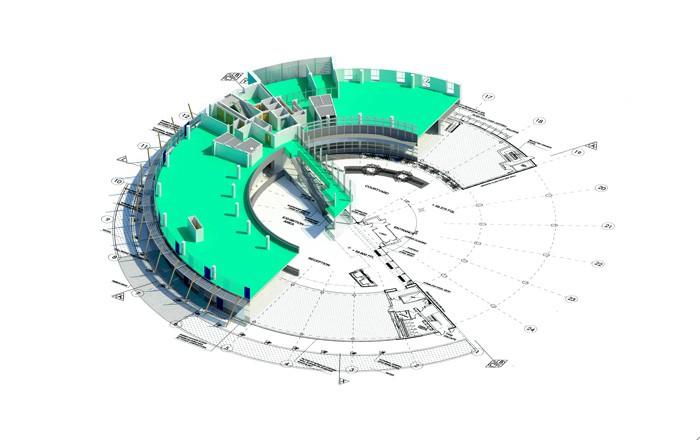As anyone that attended the 2015 CitA BIM Gathering will have noticed, there is a clear BIM-centric environment currently being fostered in Ireland.
The main aim of the event was to draw on best practice and research from international perspectives and attempt to build on this within an Irish context.
Focusing on surveying, we have many issues currently facing BIM in Ireland. In particular, specifications and requests for survey models can be haphazard and the understanding of what is required versus what is delivered is not there yet between all parties.
Anyone who has been involved in the request, purchase or production of BIM Surveys in Ireland is acutely aware of how tricky this process is here at the moment. There are many factors that have contributed to this and it is an area that Murphy Surveys encounter all too often.
The UK has mandated that all public projects must be produced to a BIM Level 2 standard by April 4th 2016 officially, as set out by the UK Government. This has driven the creation of standards and processes that contribute to this.
While Ireland currently has no such mandate we are still striving to push the boundaries here and implement similar standards and quality through BIM use. This lack of mandate and the recent state of our construction industry, along with a different infrastructure, has meant we cannot simply copy and adopt UK standards in every aspect. We can however adopt the core principles and then refine aspects that are more relevant to an Irish industry. An area that certainly can be earmarked for improvement is the area of specifying Survey and As Built BIM to make it more seamless and systematic.
In the UK, the PAS 1192 standards easily define what is required from the architects’ and contractors’ point of view but does not delve into other aspects like Surveying or As Built BIM as this would be too prescriptive and outside the main scope of the standard. Murphy Surveys intend to publish a new approach for specifying BIM Surveys that will assist anyone involved in this process to make it easier and more streamlined for companies in Ireland to adopt a simplified but standardised approach to BIM Survey specifications. This will drastically reduce miscommunication and time/modelling delays on BIM projects from incomplete survey requests.
As we see it, the request for a BIM Survey should satisfy two criteria:
• Convey the important items WE need to know, to produce a Survey/As-Built BIM
• Convey the client’s intention and understanding in the BIM Survey request.
In order to achieve this, Murphy Surveys will implement a top down approach rather than a bottom up traditional style. The graph below illustrates this approach.
The reasoning for this is that BIM is built upon a different mind-set than CAD. In CAD deliverables, the priority is sheet based plotted deliveries where adding lines/information is straightforward and linear. BIM and digital deliverables are based on objects and interactions of data and not lines, where for instance a wall can be represented in many more ways than in CAD. Extra detail in BIM can add a lot of time and file size bloating to the project and impacts performance far more than in CAD. Therefore, deciding how items are represented in BIM is critical for us to deliver appropriate survey models, not just on WHAT to include. Information can also be added textually rather than graphically which can help performance and will aid asset management downstream when integration into Computer-Aided Facility Management (CAFM systems) becomes a priority. Not to mention IFC, COBie and other data deliverables that are priorities in the UK, benefits of which will be sought and requested here all too soon.
Due to this nature and of the technological difference in providing survey BIM projects, we need to approach things a bit differently. Given that clients themselves may or may not be familiar with newer BIM methodologies or the personnel associated with the request, this is as good a reason as any to redefine the BIM Survey specification process so that not only do we know what to deliver, but the client understands what can be achieved very simply without going into the depths of modelling methods themselves.
Our specification will deliver clear, simplified routes for desired BIM outcomes and show what various sample stages will deliver in a simple matrix format aimed at specifiers and clients at the very beginning. Levels of detail and levels of information are critical for a successful project and will be part of this streamlined specification, as well as redefining the levels and terms for an Irish context. This will deliver a better, faster approach to BIM Surveys in Ireland and hopefully gain acceptance in other markets quickly.
The contents of this site are subject to copyright laws and may not be reproduced in any form without the prior consent of the publishers. The views expressed in articles do not necessarily represent those of the publishers.




